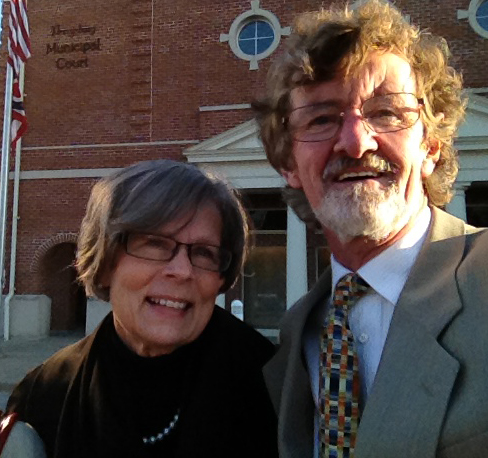In a quiet and eloquent little ceremony performed by Judge Osterud, Susan & Chris were married (again), on a warm and sunny Friday last week in Perrysburg.
 The imprint is from an olive tree leaf.
The imprint is from an olive tree leaf.
They both swore to “keep” each other.  By the time they got around the corner to Stella’s to celebrate, it was already public news at Mills’ Hardware store and downtown.
By the time they got around the corner to Stella’s to celebrate, it was already public news at Mills’ Hardware store and downtown.
A brief two day honeymoon in Cincinnati took in the large Museum of Art, with a modern (2000) Kyoto Globular Vase by Kitamura Junko:

Harvey Littleton glass
and an Eva Zeisel tea set.
Overnight was spent in the charming art deco Nederland Plaza

Next day a visit to the highly recommended bug house in the Cinci zoo, where it was warm enough for honey bees to be seen outside upon the November Asters.
 Beautiful red roses arrived just after they got back home to Perrysburg – to be color matched by a happily lunching Red-Bellied Woodpecker.
Beautiful red roses arrived just after they got back home to Perrysburg – to be color matched by a happily lunching Red-Bellied Woodpecker.

The bees were huddling for winter warmth and, on inspection, they unequivocally said (by hurling themselves at the photographer – note the large blurry one near the middle of the photo) that they did not want to be disturbed – so their covers were quickly replaced.

And out back, on the little “Garden Island” in the Maumee River, it seems that two bald eagles are also settling in, hopefully for the winter.







